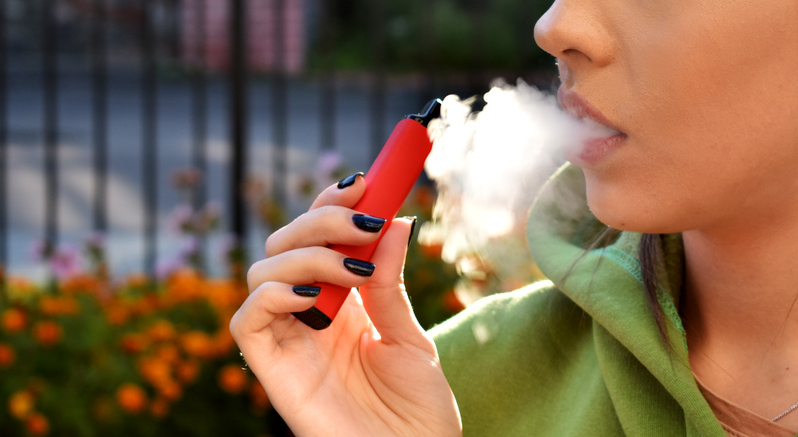Greater efforts are needed to tackle a staggering increase in vaping rates
March 3, 2024
The Federal Government last week launcheda new influencer-led social media campaign to discourage vaping among young people, warning that social media is awash with pro-vaping content.
Introduction by Croakey: Federal Health Minister Mark Butler said TikTok has more than 18 billion posts with the hashtag #vape and Instagram has more than 18,000 vaping influencer profiles solely dedicated to promoting vaping.
The next stage of vaping import restrictions take effect 1 March, with further reforms due later this year.
Since the 1 January ban on the importation of single-use disposable vapes, Butler said the Australian Border Force and Therapeutic Goods Administration had seized more than 360,000 vapes worth almost $11 million in operations across Australia, with the support of state and territory health agencies and police. The TGA seized 210,000 vapes in a single operation in February only 130,000 vapes were seized in all of 2023, before the import ban came into effect.
Meanwhile, Charles Maskell-Knight says new data shows a staggering increase in vaping rates among young people, and cautions that ongoing health efforts will be needed until vaping rates are declining as fast as they have risen.
Charles Maskell-Knight writes:
The Australian Institute of Health and Welfarereleased the resultsof the National Drug Strategy Household Survey 2022-23 on 29 February. The results relating to smoking and vaping are particularly interesting and relevant to the Governments efforts to reduce recreational vaping.
First, the good news. The proportion of people aged 14 and over who are daily smokers fell from 11.0 percent in 2019 to 8.3 percent in 2022-23 the first time it has fallen below ten percent overall, and the first time it has fallen below ten percent for the 25-39 cohort.
However, the proportion remained unchanged for people aged 60 and over, meaning that the age of the average smoker is increasing. The report notes that the proportion of older peoplequitting smoking has not shifted substantially and may require additional support to see declines in future years.
Staggering
Now, the bad news.
The first item of bad news is that the proportion of people who vape daily has increased from 2.5 percent in 2019 to 7.0 percent in 2022-23.
The proportion of regular users among people aged 14-17 increased more than five times, from 1.8 percent to 9.7 percent, while use among the 18-24 age cohort quadrupled from 5.3 percent to 21.0 percent.
These are staggering increases over a 40-month period.
For context, the last time 21 percent of 18 to 24-year-olds smoked was sometime last century.
At the other end of the age spectrum, only 1.6 percent of people aged 60-69 vaped, and only 0.4 percent of people aged 70 and over. When asked their main reasons for using vapes, about three-quarters of older people said they were to help quit smoking or cut down on regular cigarettes.
The pattern among younger people is completely different.
Curiosity is a reason given by almost three-quarters of 14-17 year olds, and more than two-thirds of 18-24 year olds. As these cohorts have very low smoking rates, smoking cessation or reduction is insignificant for the 14-17 cohort, and under ten percent for the 18-24 cohort.
The second item of bad news is the relationship between smoking, vaping, and socio-economic status.
The report concludes that: Taken together, the results show that ecigarettes as a smoking cessation aid are not reaching key demographic groups that have high levels of smoking (older people and those living in areas of high socioeconomic disadvantage), and that vaping is higher among groups with pre-existing lower levels of smoking (younger people and those living in areas of high socioeconomic advantage).
In other words, disadvantaged people continue to suffer the harms of smoking, but more advantaged groups are being exposed to the new harms arising from vaping.
The third item of bad news is that regardless of their reason for starting vaping, about 30 percent of current users aged 14-39 say they would be unable to stop or cut down their use. Nicotine is addictive, no matter how it is consumed.
Where to from here?
Themeasuresalready announced by Minister Mark Butler to restrict use of vapes are clearly necessary and overdue. It is a great pity that similar efforts by ex-Minister Greg Hunt werestymiedby a party-room revolt.
However, these measures need reinforcement through public engagement by the health sector and public health advocates.
The argument byAstro-turfed lobby groupsthat unrestricted access to vapes is important for smoking cessation needs to be called out as nonsense. The overwhelming majority of vape use is completely unrelated to smoking cessation, and is exposing people who were not at risk from tobacco use to new risks from vaping.
It is great that the Government islaunchinga social media campaign to to combat pro-vaping messaging online, and try and convince young Australians to give up the nicotine habit.
However, reports suggest that this will run from March to May. It needs to be an ongoing effort, refreshed regularly, until there are clear signs that vaping rates are declining as fast as they have risen.
Croakey Editor: Melissa Sweet
First published by Croakey on 29 February, 2024

